Whether it's indoors or out, you want the right type of shoes to match your environment. Here's how to select the best indoor soccer shoes.
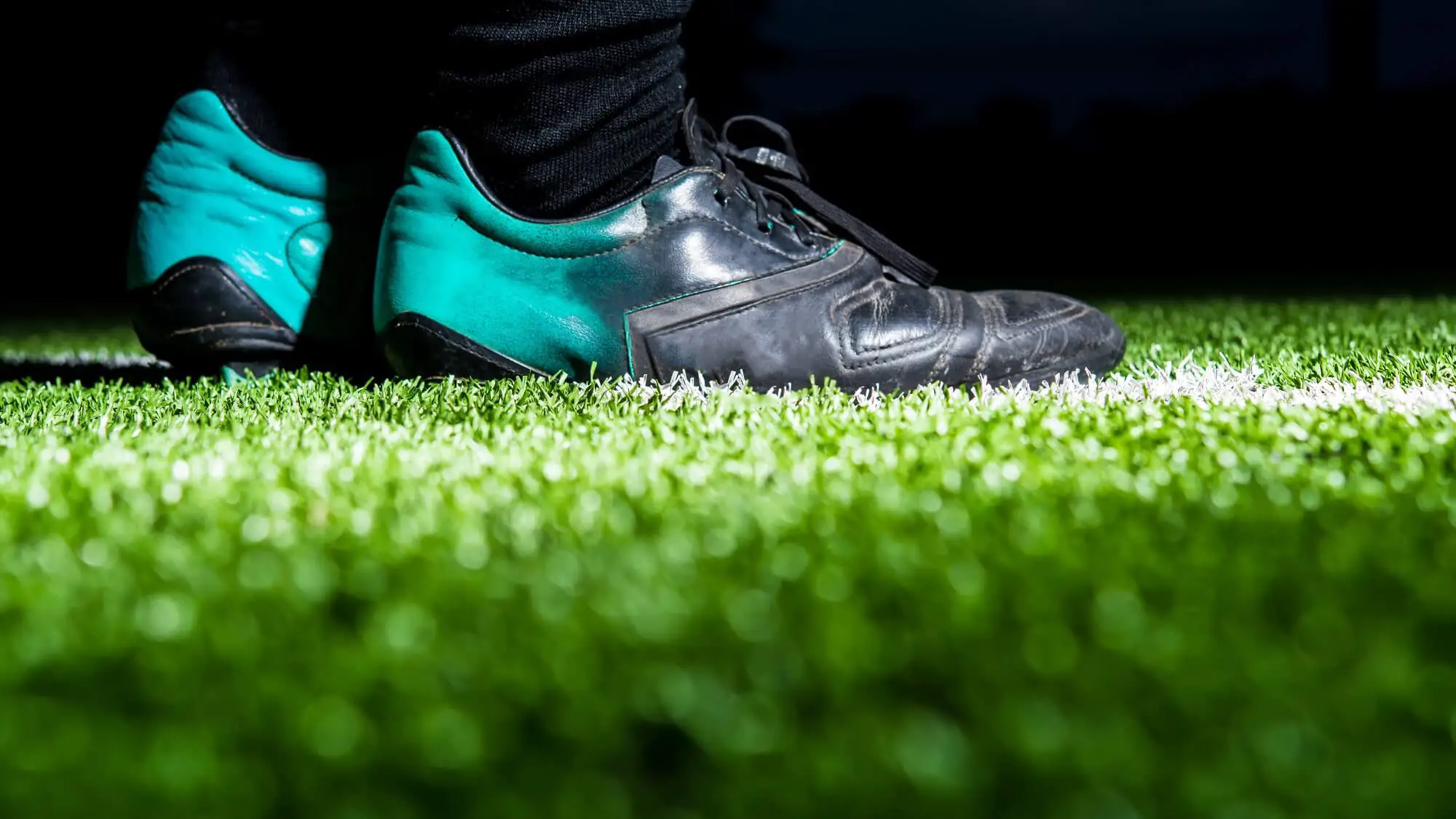
Life would be simpler if we lived in a world where just one pair of shoes would do. Our shoe racks would look a whole lot emptier. However, with the US spending $32 billion in the footwear segment, just between Nike, Adidas, and Puma the reality is, we can't get enough of shoes. In particular, the variety of indoor soccer shoes that you can choose from is pretty overwhelming. Even the same brand has a lot of choice. That's before you even get into whether you want to wear Messi's shoes or Ronaldo's shoes.
Different types of shoes satisfy our style preferences and provide us with solutions to different needs. Indoor soccer shoes are a perfect example of a shoe, fit for a specific purpose.
But there's a problem. It may seem a simple enough solution, but many people get frustration and anxiety when trying to decide which shoe is right for them.
Advertisements push particular brands and products, but are they going to give you the best performance where it matters? This article will give you all the answers on how to pick the best indoor soccer shoes for you.
Quick Summary of ShoeGuide's Best Indoor Soccer Shoes for 2022
With any indoor soccer shoes, there are a wide variety of different aspects that make up the design. Picking the right type of material, weight and traction type can make a big difference in performance.
An important thing to remember as well is to get the right size of shoe. You can follow some simple shoe fitting tips to make sure you select the right size. Let's jump into the different parts that make up your shoes.
Here are the Best Indoor Soccer Shoes You Can Buy:
- Best Overall: adidas X Speedflow.1
- Runner Up: Nike React Gato
- Best Kids' Indoor Soccer Shoe: adidas Predator Edge.3
- Best if You Love Puma: Puma Ultra 2.1 IT
- Most Fashionable: adidas Samba Classic
- Best on a Budget: Puma Ibero
- Best Nike on a Budget: Nike Tiempo Legend 9
- Court Shoes: Nike Premier 3 IC
- Best High-Performance Nike: Nike Lunar Gato II
- Best of the Rest: adidas Mundial Goal
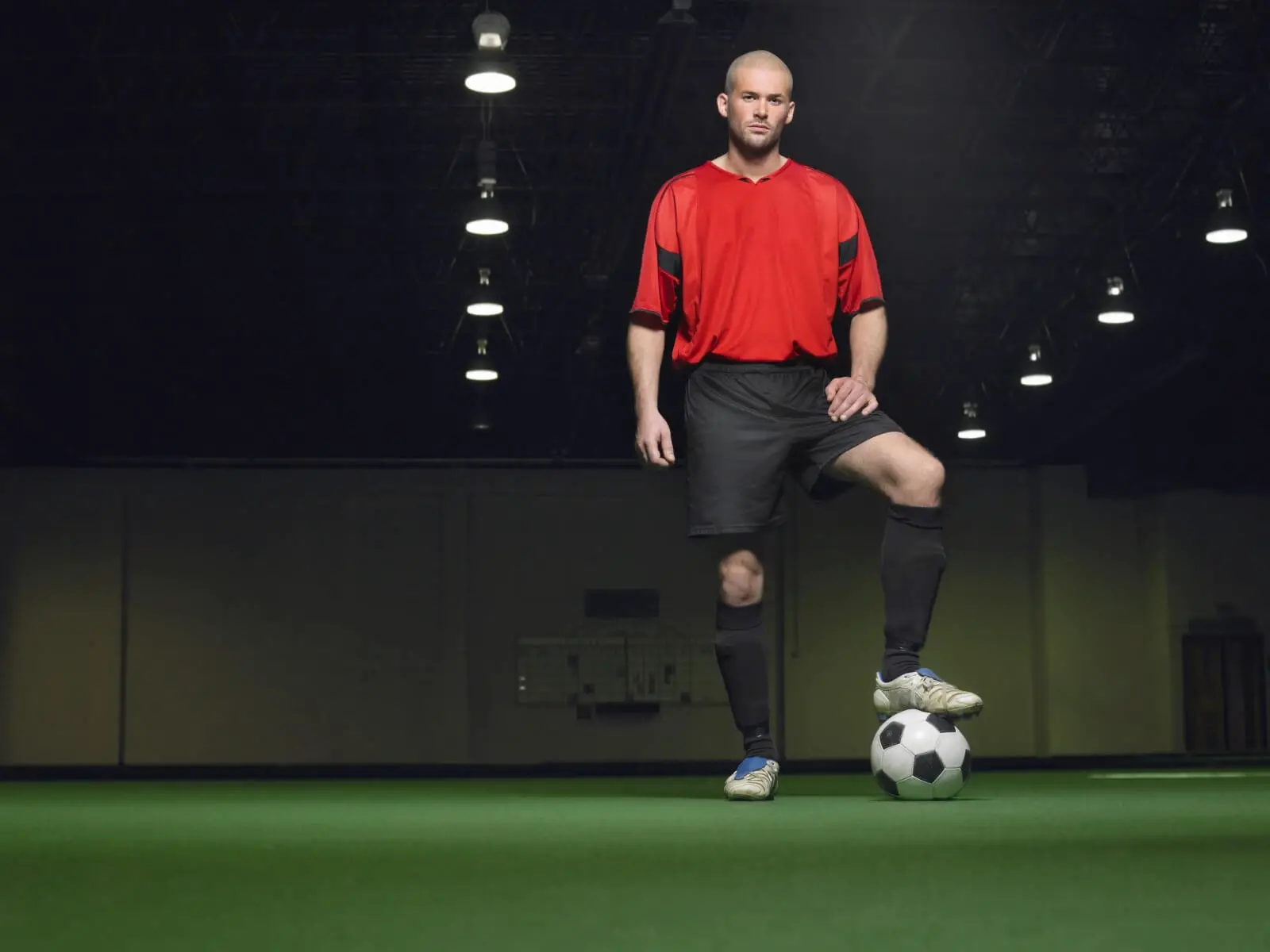
What's the Difference Between Indoor Soccer Shoes and Cleats?
US consumers on average buy 7.5 pairs of shoes a year. When you first decide to buy soccer shoes, whether they are for your kids or for yourself you can overwhelm yourself with options.
You have everything from blades, to studs to regular shoes, it can all be a little much.
The big difference between indoor soccer shoes and soccer cleats is the lack of studs. Further, indoor shoes come with a durable rubber outsole. It's very similar to the kind you'd find on a pair of basketball shoes.
Indoor soccer shoes also have a different type of tread pattern that provides extra traction on any glossy surfaces. Like those that you'd find inside a typical gymnasium. When deciding on which indoor soccer shoe is right for you there are factors to take into account.
For that reason, in this article we will cover the most important aspects so that once done, you'll be able to easily decide which soccer shoe is right for you.
First, here's a summary of the best shoes out there and our rating for them. Below the table you'll find a lot more information on what to look for in an indoor soccer shoe.
Understanding the Way You Play
Before we dive into what to look for in your next set of indoor soccer shoes, this section will help explain how indoor shoes can differ from outdoor shoes. It'll also tell you why you want to be picking the right shoes for the type of court you'll be playing on.
Understanding Traction
When playing indoor soccer, you'll usually be playing on one of two surfaces: turf or an indoor court.
Manufacturers that design indoor soccer shoes have a flat gum rubber sole, they design these for courts similar to basketball courts. They often will still look great when wearing them on the street too.
These types of soles are non-marking and will generally have complex tread patterns to give you maximum traction on the pitch.
Alternatively, you have shoes designed for turf, which are a little more durable and can have a little more traction than court shoes. These type of turf shoes often have low-profile studs, you can notice them by the protruding rubber bumps on the bottom of the shoes.
You can use turf shoes on hard surfaces, natural fields, and artificial turf.
Pick the Best Indoor Soccer Shoes for your Court Type
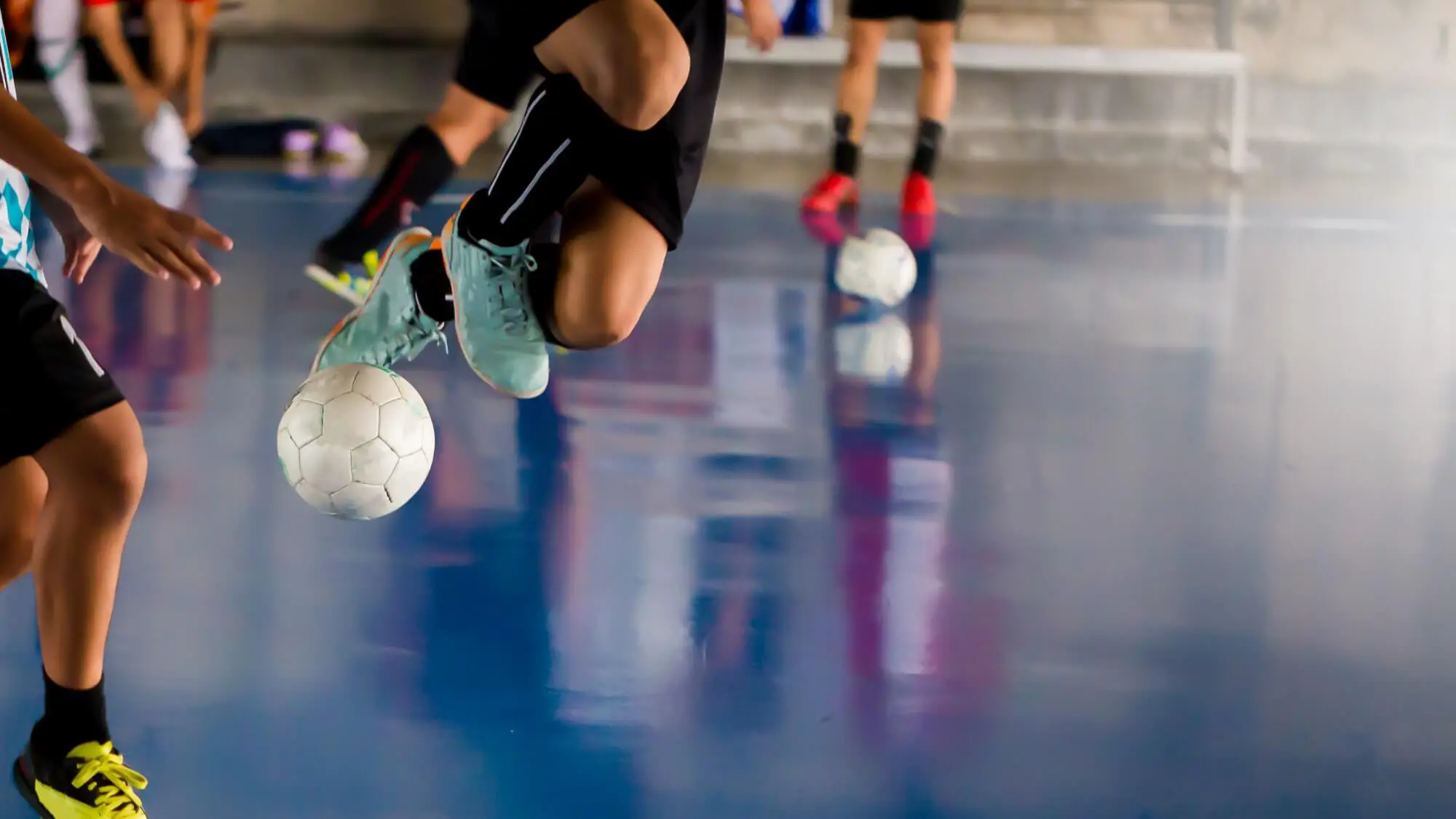
Depending on the type of court you'll be playing on will depend on the type of indoor soccer shoes you want to purchase. If you are primarily going to be playing on inside courts, then an indoor court shoe will give you the best grip.
The added tread patterns will also allow for quicker turning and generally quicker response.
If you will be playing on astroturf style grounds you might be better off picking a type of shoe like an outdoor turf shoe. The added rubber grips don't damage the turf but will give you more grip on the different type of surface.
Figure Out Your Playing Style
Depending on what position you play in the game can have a big effect on what type of indoor soccer shoes to purchase. Having the right shoes for your play style will not only enhance your performance, it will generally also help you to be more comfortable throughout the game.
Think before purchasing if you are more of an attacking player, a more defensive player or do you usually place as a goalkeeper? The type of shoe you'll pick for each may differ a little.
Attacking Players
Since you'll be focusing on creating the goals, you'll want to select a shoe with a cleans strike vamp (or strike zone). Shoes which have less weight will give you more maneuverability too.
Defending Players
As a defender, your shoes are likely to get a lot more abuse as you'll be guarding against your opponent. You'll want to pick a shoe which gives you a lot of protection, durability and lateral support.
Goalkeeper
As a goalkeeper, you'll want to pick a shoe that has a lot of lateral support and traction. Because you'll be moving from side to side a lot you'll want the extra traction.
If you have flat feet, sometimes people opt to use running shoes for flat feet, but if your main use of the shoes will be indoor soccer, you may be better of getting dedicated shoes with an insole.
Understanding the Anatomy of an Indoor Soccer Shoe

With any indoor soccer shoes, there are a wide variety of different aspects that make up the design. Picking the right type of material, weight and traction type can make a big difference in performance.
An important thing to remember as well is to get the right size of shoe, you can follow some simple shoe fitting tips to make sure you select the right size. Let's jump into the different parts that make up your shoes.
Consider the Material Type
You would think that material wouldn't make that big of a difference to your performance, but different types of materials can have a big impact. The type of material manufactures make your indoor soccer shoes from can affect performance and durability.
The most important aspect to consider is that different materials offer a different feel and touch which can make the choice for most players down to preference. There are usually two main different types of material to choose from.
Leather
Leather can be one of the more popular choices as it's flexible, soft and will mold around your feet. Its touch is great but it stretches as the shoe gets broken into.
There are a few different types of leather which you can select for your indoor soccer shoes:
- Suede leather - Suede leather is traditional leather but with the top removed, this gives it a softer feel to the touch.
- Kangaroo leather - Many refer to these as k-leather, and is very comfortable and feels very soft. Kangaroo leather is, however, one of the most expensive leather options.
- Calfskin leather - This isn't as expensive as kangaroo leather and it does feel very similar to the touch. It retains its shape better than k-leather but it is heavier.
- Full grain leather - Full grain leather is thicker and more durable than calfskin or kangaroo leather with a similar touch and feel. This type of leather does weigh the most though.
With such a wide range of leather choices, it's worth deciding on what type of leather will benefit both your comfort preferences and your play style.
Synthetic
Synthetics are generally lighter, thinner and more durable than real leathers. You'll typically find they don't stretch as much though.
As with leather, there are a few different types and varieties of synthetic shoe options:
- Synthetic leather - This plays and feels like leather, but it usually is a little lacking in the touch.
- Mesh - This type of material is thin and breathable and is very lightweight in comparison to leather options. The only downside is it doesn't offer as much support as leather.
Overall synthetics can be a really popular alternative to leather soccer shoes, especially when it comes to indoor shoes.
Durability of Materials
The durability of your indoor soccer shoes is important. With 98.44 million Americans purchasing athletic shoes in the last 12 months, the better durability your indoor soccer shoes have, the less likely you'll need to replace them.
Remember if you are using your soccer shoes as regular trainers as well, they will not last as long. You would usually expect indoor shoes to last you a couple of seasons or sometimes even longer than that.
Rubber outsoles on indoor soccer shoes, for the most part, are pretty durable. When it comes to the upper material, your durability will generally run in this order, top being the best and bottom being the worst:
- Synthetic leather
- Full-grain leather
- Suede leather
- Calfskin leather
- Kangaroo leather
- Mesh
Comfort, Fit and Support
Another important factor to consider when picking indoor soccer shoes is to make sure you are picking a pair that are going to be comfortable. You will usually find you'll be running around a football court for anywhere from 60-90 minutes at a time.
You'll want to make sure that you have a snug fit with your shoes, but not so tight that it begins to irritate you in any way. It's crucial therefore to make sure you know how your shoes should fit you.
Some shoe manufacturers tend to run to a certain width, so if you have a feeling your foot shape is a little irregular. Make sure to fully test out your indoor soccer shoes while going through the purchasing process.
You want to make sure they fit nicely to the side of the shoe, so you don't have much room to wiggle around. Make sure the shoe has a good sidewall and arch support.
As you will find that your feet are going to be moving side-to-side it can take a serious toll on your ankles without the right support. Lateral support will go a long way in preventing any damage happening to you in this way.
It's worth leaving a tiny amount of room at the very end of your shoe where your toes are about to touch. You want to have less than a thumb width free at the back of your foot, but not so much that you can't get your little finger between your heel and the back of the shoe.
Make sure you don't feel any discomfort or pressure points as you are walking. Remember if you are picking leather shoes that they will often stretch so make sure they are snug to your feet, as it will mold over time.
Other Important Factors to Consider with Indoor Soccer Shoes
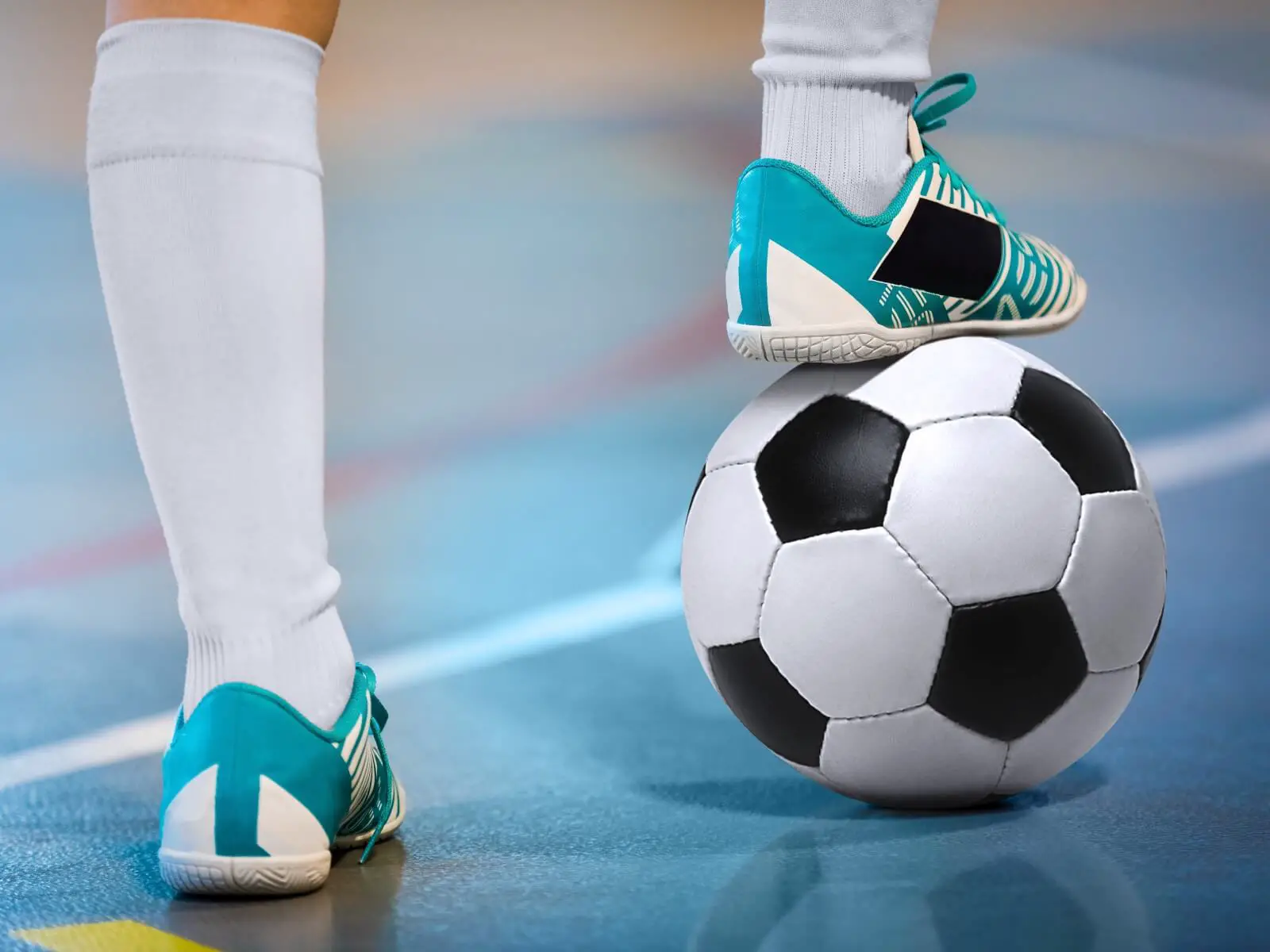
There are a few other factors that are worth considering when you are trying to get the best performance out of your indoor soccer shoes.
Support
When it comes to indoor shoes, you'll usually find they are low-cut with low-profiles. They design them this way so that your feet are closer to the ground for a better connection and feel.
They usually will have good arch support and rigid sidewalls which makes it convenient for when you need to sprint or dash while controlling the ball.
Weight
You will usually find that indoor soccer shoes are going to be a lot heavier than the outdoor alternative. This is because the rubber soles are typically a lot more substantial.
Weight shouldn't be a huge concern for indoor shoes, however.
Breathability
Breathability can actually be a hugely important factor, as indoor soccer can get pretty hot, pretty quickly. Lighter materials will usually be more breathable, mesh that's strategically placed can really make a big difference when it comes to reducing down the heat of your feet while playing indoors.
Time to Get the Best Indoor Soccer Shoes for You
When it comes to indoor soccer shoes, there are so many aspects which you can consider. By focusing on picking the right kind of shoes for the games you will be playing you can accomplish a number of goals.
Improve the durability, prolong the life and ultimately, win more games. For more help on picking the right shoes for you, reach out to us today.


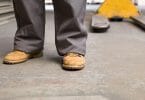
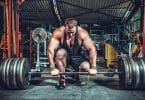

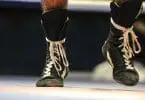
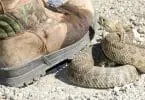
The durability of your indoor soccer shoes is VERY important to me. New shoes tend to be stiff and take a little getting used to their subtle nuances. I love a well broken in shoe that you are completely familiar with. I would rather spend more and get more than double the life out of the shoe than cranking out a new pair regularly. Great article!